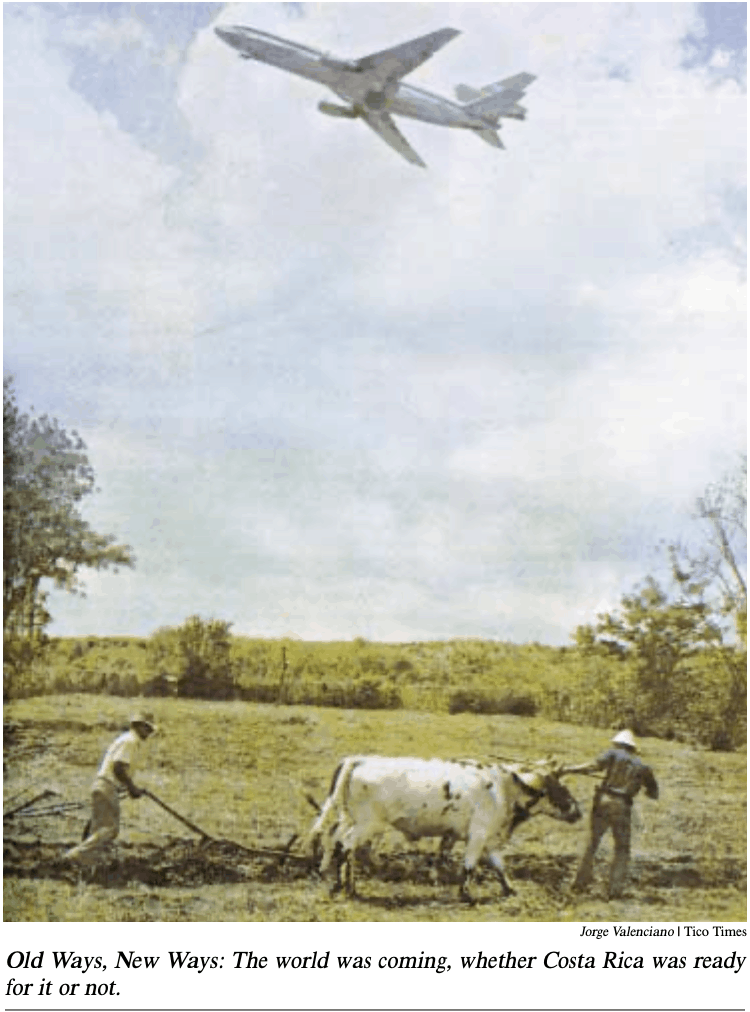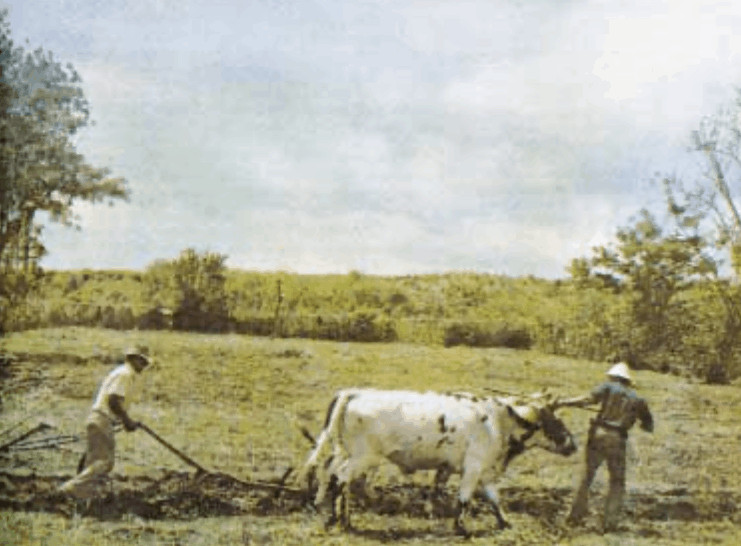The 1970s were a transformative decade for Costa Rica, marked by rapid modernization and a blending of traditional life with new influences from around the world. This period of change saw the arrival of the Inter-American Human Rights Court, the establishment of the University for Peace, and the creation of La Sabana Park in San José.
Infrastructure developments, like the Braulio Carrillo Highway and the “pista” linking San José with Escazú, facilitated access across the country and fostered economic growth. Cultural initiatives flourished as well, with the founding of the National Youth Symphony and the Museum of Costa Rican Art, and new recreational activities like river rafting became popular.
The photograph below captures this contrast vividly, symbolizing the intersection between Costa Rica’s traditional and modern identities. In the image, two farmers work their land with the help of an ox, representing centuries-old farming practices. Above them, a DC-10 jumbo jet roars across the sky, a reminder of Costa Rica’s emerging connectivity with the broader world. By the 1970s, Costa Rica had welcomed its first jumbo jets, allowing for an increase in tourism and international business, key drivers in the country’s evolving economy.
This juxtaposition of old and new reflects a decade where Costa Rica embraced progress while preserving its rich cultural heritage. Rural life continued to thrive alongside modern advancements, embodying a blend of simplicity and innovation. The image serves as a poignant reminder that as Costa Rica moved forward, it carried with it the traditions, values, and resilience of its past—a testament to the enduring spirit of “pura vida” even amidst change.

How Costa Rica has changed!

